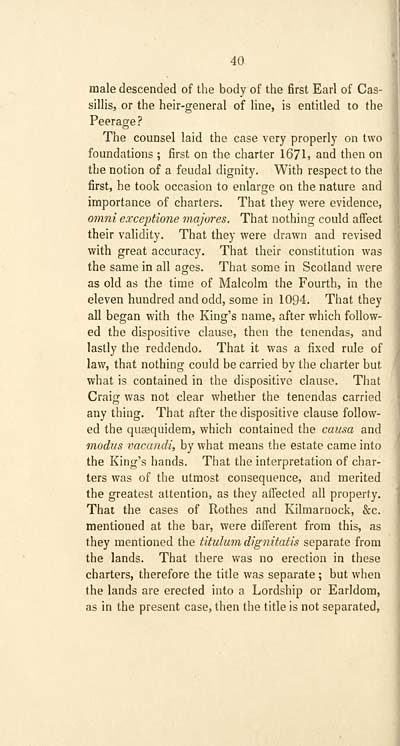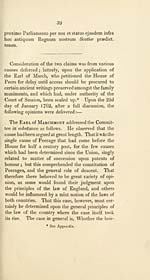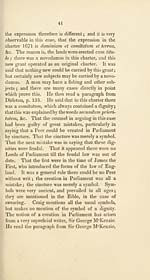Cassillis peerage, 1760-4
(50) Page 40
Download files
Complete book:
Individual page:
Thumbnail gallery: Grid view | List view

40
male descended of the body of the first Earl of Cas-
sillis, or the heir-general of line, is entitled to the
Peerage?
The counsel laid the case very properly on two
foundations ; first on the charter 1671, and then on
the notion of a feudal dignity. With respect to the
first, he took occasion to enlarge on the nature and
importance of charters. That they were evidence,
omni exceptione majores. That nothing could affect
their validity. That they were drawn and revised
with great accuracy. That their constitution was
the same in all ages. That some in Scotland were
as old as the time of Malcolm the Fourth, in the
eleven hundred and odd, some in 1094. That they
all began with the King's name, after which follow-
ed the dispositive clause, then the tenendas, and
lastly the reddendo. That it was a fixed rule of
law, that nothing could be carried bv the charter but
what is contained in the dispositive clause. That
Craig was not clear whether the tenendas carried
any thing. That after the dispositive clause follow-
ed the qua3quidem, which contained the causa and
modus vacandi, by what means the estate came into
the King's hands. That the interpretation of char-
ters was of the utmost consequence, and merited
the greatest attention, as they affected all property.
That the cases of Rothes and Kilmarnock, &c.
mentioned at the bar, were different from this, as
they mentioned the titulum dignitatis separate from
the lands. That there was no erection in these
charters, therefore the title was separate ; but when
the lands are erected into a Lordship or Earldom,
as in the present case, then the title is not separated,
male descended of the body of the first Earl of Cas-
sillis, or the heir-general of line, is entitled to the
Peerage?
The counsel laid the case very properly on two
foundations ; first on the charter 1671, and then on
the notion of a feudal dignity. With respect to the
first, he took occasion to enlarge on the nature and
importance of charters. That they were evidence,
omni exceptione majores. That nothing could affect
their validity. That they were drawn and revised
with great accuracy. That their constitution was
the same in all ages. That some in Scotland were
as old as the time of Malcolm the Fourth, in the
eleven hundred and odd, some in 1094. That they
all began with the King's name, after which follow-
ed the dispositive clause, then the tenendas, and
lastly the reddendo. That it was a fixed rule of
law, that nothing could be carried bv the charter but
what is contained in the dispositive clause. That
Craig was not clear whether the tenendas carried
any thing. That after the dispositive clause follow-
ed the qua3quidem, which contained the causa and
modus vacandi, by what means the estate came into
the King's hands. That the interpretation of char-
ters was of the utmost consequence, and merited
the greatest attention, as they affected all property.
That the cases of Rothes and Kilmarnock, &c.
mentioned at the bar, were different from this, as
they mentioned the titulum dignitatis separate from
the lands. That there was no erection in these
charters, therefore the title was separate ; but when
the lands are erected into a Lordship or Earldom,
as in the present case, then the title is not separated,
Set display mode to:
![]() Universal Viewer |
Universal Viewer | ![]() Mirador |
Large image | Transcription
Mirador |
Large image | Transcription
Images and transcriptions on this page, including medium image downloads, may be used under the Creative Commons Attribution 4.0 International Licence unless otherwise stated. ![]()
| Histories of Scottish families > Cassillis peerage, 1760-4 > (50) Page 40 |
|---|
| Permanent URL | https://digital.nls.uk/95037538 |
|---|
| Description | A selection of almost 400 printed items relating to the history of Scottish families, mostly dating from the 19th and early 20th centuries. Includes memoirs, genealogies and clan histories, with a few produced by emigrant families. The earliest family history goes back to AD 916. |
|---|

